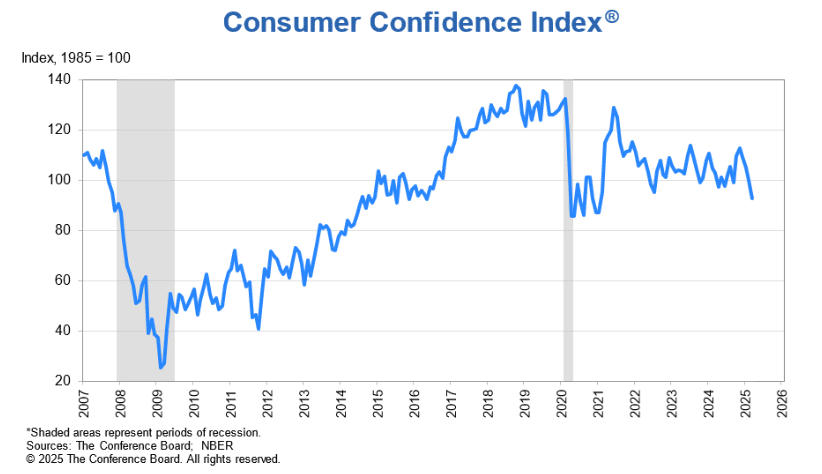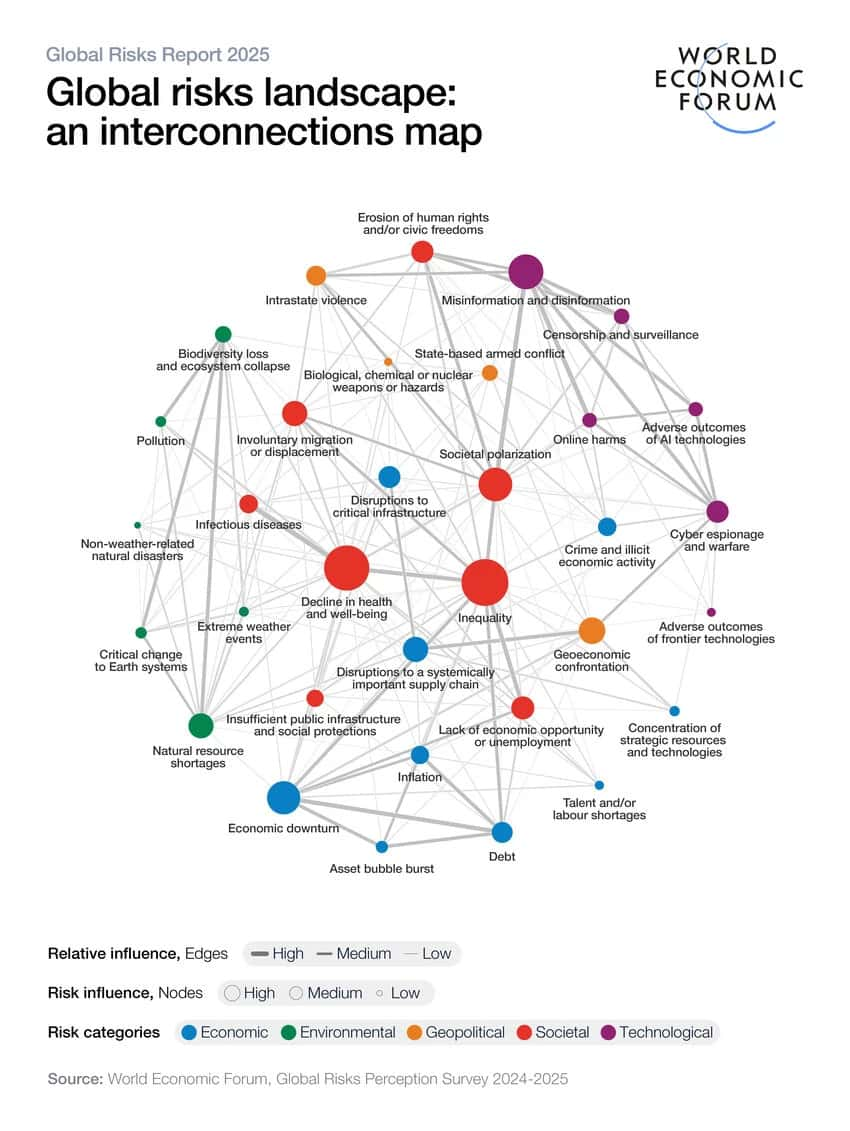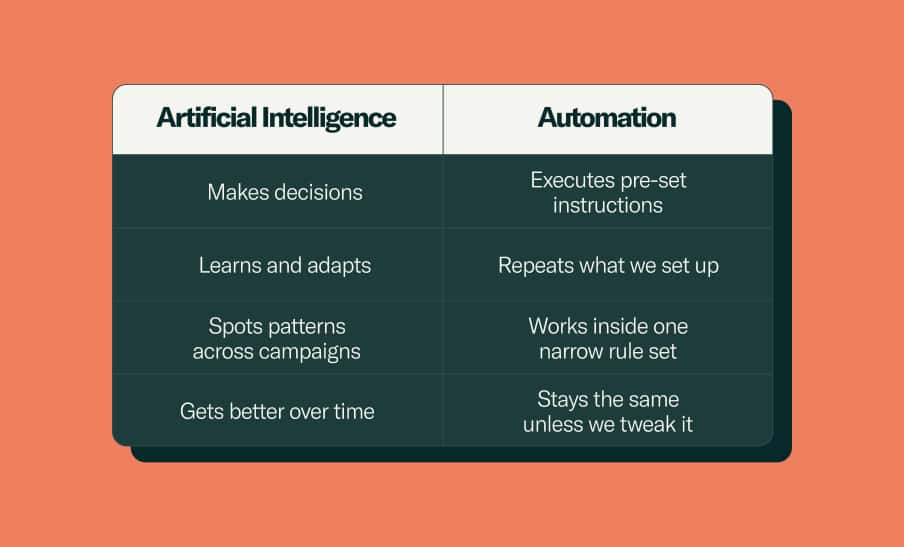Performance marketing in 2025 feels like playing Tetris on expert mode, blindfolded, while someone keeps changing the shape of the blocks. Tariffs, supply chain issues, and rising costs are forcing marketers to adopt more efficient and strategic approaches.
But while some CMOs scramble to react to tariffs, there is a cohort taking a different approach, using lessons learned from marketing upheavals during Covid-19.
They’re acting quickly and confidently, implementing nuanced plans with less guesswork and hesitancy. They’ve built resilience and adaptability into their strategy, so each black swan event doesn’t require them to build a new playbook completely from scratch.
Not to oversell it: these brands still face real challenges, and there’s much that remains well outside their control. But when they pull the levers within their reach, their grasp is less “white knuckle” and more “urgent confidence.”
Before we look at how these brands manage the unexpected, let’s quickly review the events of the last few weeks.
Tariffs: The Latest Shock to Marketers
The announced tariffs are putting pressure on markets, supply chains, and prices, leading to tighter margins, shifting consumer behaviors, and impacting budgets.
The Conference Board’s Consumer Confidence Index fell by 7.2 points in March, and consumers’ expectations of the economy dropped even further to a 12-year low.

According to a recent IAB survey, over half of U.S. advertisers expect to cut budgets by 6–10% this year. Some are bracing for deeper cuts that go up to 20%.
Some brands have already withdrawn (Delta Airlines, Bellascura) or reduced (Pernod Ricard, Constellation Brands) financial guidance in response to the tariffs. It's been reported that many other brands seem to be adopting a “wait and see” mindset, but the marketing leaders I've spoken with all seem to be taking action.
Mostly, they're doubling down on the trend of tighter focus on marketing efficiency. My friend, Jack Farrell, VP Global E-Commerce at PopSockets summed it up well:
“We came into this year looking to make each performance marketing dollar work harder than previous years. Now we're tightening the efficiency requirements even more (as well as some channels’ attribution windows) because the math has changed.”
Why Tariffs Are Just the Tip of the Iceberg
The tariffs demand attention, but they’re also just a harbinger of the volatility that is becoming the rule, not the exception.
Every year, the World Economic Forum (WEF) produces a Global Risks Report to describe changes occurring in the global political economy each year. Their 2025 report observed:
- Increasing “instability in societies, economies, and institutions” is intensifying the global risk landscape.
- Survey respondents foresee increased risk both the short- and long-term.
- The usual methods of containing risk are becoming less effective.

It’s a complex, interconnected web of risk, but the real effects of Covid-19, subsequent supply chain disruptions, and the most recent round of tariffs all illustrate that the risk is not some abstract global concept. It’s a real issue every executive will need to manage again and again.
So while there is an imperative for CMOs to navigate the tariffs and find performance edge in a challenging environment, it’s not enough to treat this situation as a standalone instance of market disruption.
There’s a second, less urgent but more important imperative:
Find a way to prepare for more improbable, unexpected and disruptive events.
Automation’s Limits: When Rules Can’t Keep Up
Automation has been an incredible gift to marketers. It made us faster, more efficient, and freed us from repetitive tasks. But it’s like cruise control, working well until the road swerves.
Automation gives you an edge when the rules are clear and you can use them to execute pre-determined actions faster than you could manually.
But when conditions shift or rules change, automation needs direct intervention: you need to manually update the rules before the behavior of the system changes. Which also means you need to manually make new plans for each new reality.
Here’s a simple way to tell the difference between AI and Automation:

I asked Vikas Mishra, our Co-CTO how he’d describe the difference. Here’s what he said:
If your “AI” isn’t showing its work, or if you have to fix it manually every time something changes, it's not AI.
And the real leap is in adaptive systems: they don’t just respond to change, they anticipate it. They model behavior, detect new patterns, and evolve in real time, without waiting for a human to rewrite the logic.
That’s what makes AI indispensable in volatile environments. It learns, it adapts, and it scales insight far beyond what static automation is capable of.
As brands seek more ad-spend efficiency in reaction to tariffs, they should also seek to build greater adaptability into the systems and processes that power growth, to prepare for the next disruption. True AI creates second-order advantages compared to the automation-based tooling we’re all used to, and has a critical role to play in the mandate for adaptability.
AI: The Engine of Adaptive Marketing
Real AI (the kind that adapts, analyzes, and actually makes sense of chaos) is the secret weapon of performance marketing teams that don’t stall when the market lurches.
This isn’t an “art of the possible” projection or imagination of what AI could do. It’s what AI is doing now, for those who are optimizing their organizations for adaptability.
Here’s how AI contributes to resiliency and adaptability to brands who have incorporated it into their marketing strategies today, with real examples:
Short-Term Speed & Long-Term Adaptability
When there are immediate targets to hit, AI helps:
Find the right audiences faster
A targeting AI won’t just follow the rules you set, it orients itself to outcomes, and goes beyond the rules you thought of. AI can consider every signal, not just the ones you’re actively segmenting on.
Example:
Your typical audiences aren’t buying as much due to tariff-driven uncertainty. Your performance marketing team might not have thought that “people who watch unboxing videos after 10pm” would be the next best audience. How could they? But your AI found an unexpected pattern in behavior, content consumption, device usage, and hundreds of other attributes, then shifted budget toward higher-propensity buyers.
Optimize bids and budgets in real time
One AI can find new targets. Another can figure out how to spend ad budget on those targets, with your goals in mind.
Example:
Tariffs are affecting each geography differently and your geo-targeted campaigns are suddenly behaving differently, but for different reasons.
The AI doesn’t know a new tariff has been announced, but it doesn’t need to: it sees the behavior changes and starts shifting budget to optimize efficiency while the campaign’s running.
Spot creative fatigue before performance tanks
Because True AI monitors every performance signal in real time, such as scroll speed, click-through rates, drop-offs, conversions, it can even identify situations where budget doesn’t need to move: creative needs to change.
Example:
Your value props don’t quite land the way they used to, now that consumer preferences are changing on a dime. Your AI spots fatigue before it appears in your dashboard, and begins rotating in new creative automatically.
Make forecasting an always‑on, always‑improving process
AI can help you go beyond forecasting based on historical performance - a methodology that becomes much less useful in times of disruption.
And more than that, AI can automatically identify the best-fit forecasting methodology in real time, based on real performance to plan. Pixis, for example, uses multiple budget‑pacing and allocation models in parallel, then stress‑tests each one in an AI Simulator before it ever touches live spend. The worst‑performing models are dropped. The best are promoted and re‑trained nightly, so every forecast gets sharper as new signals roll in.
Example:
Your finance team needs confidence that Q4 ad spend will still hit a 45‑day CAC payback even if tariffs on key SKUs climb another 5%. You load three tariff scenarios into the simulator. The system projects daily spend, conversions, and margin for each scenario, recommends swapping in a higher‑margin product set if duties rise, and locks those guardrails into the pacing plan.
Be prepared, regardless of the context
AI optimizes itself based on what is working and what will work, regardless of the situation. It’s informed by what has worked, but not dependent on it. And because it never tires of analyzing heaps of data, AI can make informed decisions from the entire universe of channels, ad types, ad sets, campaign objectives, engagement metrics, audiences, bid strategies, and just about every other signal.
If a platform only saves time, that’s not enough. It has to change how you work. The real question is: does it shift my team from task execution to value creation?
CMOs with AI-powered systems at their disposal are able to react better to things like the new tariffs. But they also experience a reduced need to react, because the adaptability is built into the way their teams work.
Contrast in Reactions to Tariffs
I wanted to get a better picture of the contrast between brands that are in reaction mode to the tariffs and those that focused on adaptability and resilience before the tariffs hit.
So, I talked to Rupesh Sharma, Managing Director of Media & Technology Operations at Realtime., an agency that manages digital media for brands like McKinsey, American Express, Swarovski, and Sonos.
Pesh told me he’s not making an attempt to predict what the next several months look like for advertisers. There are just too many variables.
What is certain, he said, is that many marketers will make all the textbook moves in light of higher prices and flagging consumer demand:

Pesh doesn’t blame these marketers for their actions. These are the moves of a performance team that is reacting quickly and under pressure to events outside their control, using conventional wisdom and inhuman amounts of hustle.
But he also stressed that there’s another path. Marketeres who have "seen this movie before" lean in on two core strategies, aided by their focus on adaptability and investment in technologies that improve their operating efficiency.
Zig when others are zagging.
“Attribution breaks down. Every experienced marketer knows that, and will go where incrementality is higher, not just where ROAS looks good.
So those marketers may actually spend more on awareness. If you can measure incrementality well enough, awareness can be a more cost-effective way to bring in quality traffic, especially when last-click attribution breaks down.
People always have a shortlist of three when they go to buy. Upper funnel work — brand, loyalty, values — puts you on that list. That’s what you’re investing in.”
Develop creative strategies to drive loyalty.
“If the price is going to go up, the pool of customers who can afford your product may shrink. That makes loyalty and brand trust even more important.
Can you design a customer experience that gives you an edge? Offer some new value add to maintain pricing power? And you can test messaging to win a larger portion of that cohort.”
In times of volatility, adaptive marketing teams like the ones Pesh works with can spend time on creative approaches others can’t. Their preparedness lies not in their foresight of the tariffs specifically, and they’re certainly not unaffected. They recognized the situations that placed acute pressure on their teams to react, and invested in a change that would prevent the need to react the same way again.
Key steps in their campaign optimization, targeting, and creative workflows are AI-enhanced, or fully delegated. The result is an adaptable growth system that allows their teams to think creatively, focus on customers, and work faster.
The Future Belongs to Resilient CMOs
Tariffs got our attention, but tomorrow’s curveball could be a privacy overhaul, a supply‑chain shock, or a new rival with a disruptive model. Frankly, it should matter less what the specific disruption is, and more what your marketing engine can absorb.
That level of resilience hinges on AI. True AI turns live data into live strategy, automatically testing scenarios, reallocating budgets, and refreshing creative before cracks appear on your dashboard. It keeps margins healthy and growth steady even when market signals point in ten different directions.
You cannot design a manual playbook for every black‑swan event. You can design a system that learns from each one. Start by auditing where rigid rules still run your media, where forecasting relies on last quarter’s patterns, and where your teams burn hours hunting for insights AI could surface in minutes. Then place deliberate bets on technology that makes adaptability routine.
Whether today’s challenge is tariffs or tomorrow’s unknown, an AI‑first operating model lets CMOs move from reactive defense to proactive offense. Build it now, and the next disruption becomes your opportunity to lead.
